Beyond a Culturally Bound Astrology
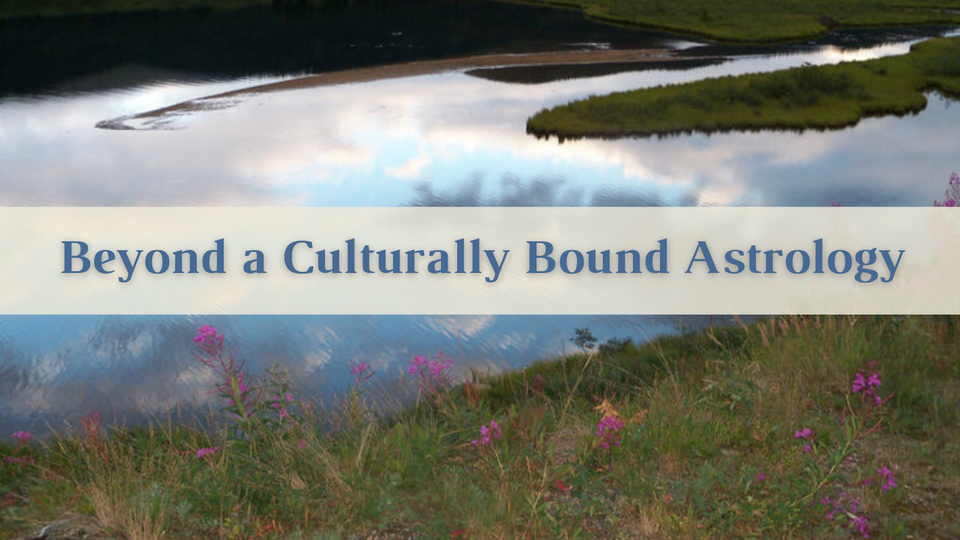
Beyond a Culturally Bound Astrology
An Exploratory Essay Birthed by the Sagittarius New Moon
Note:
Instead, I'm sharing what I've said thus far, in the hopes that this will inspire conversation. I'm sharing this too for all members, though typically content like this long-form essay would be part of the Myxticism content for premium subscribers.
I may come back and make some edits for clarity and mechanics, but will elaborate upon these ideas elsewhere. If you care to share your thoughts, or join the conversation, please feel very free to drop your thougths in the comments, or drop me a line.
And, if something here connects with works or words you've seen elsewhere, please feel free to share that as well.
I decided to post this in it's current state after dropping in to Kristin Mathis's live chat for her paid Mysteria Mundi subscribers. In what was a lively and thrilling conversation, we talked about the hymns, and the relationships between the bows and arrows of Artemis, the Moon, and Sagittarius, and then some.
As you read through the essay-esque prose below you'll see why that convo inspired me to share what I've got so far.
If you're into Orphism, working with the planetary spirts, and the good good wisdom, be sure to check out her work!
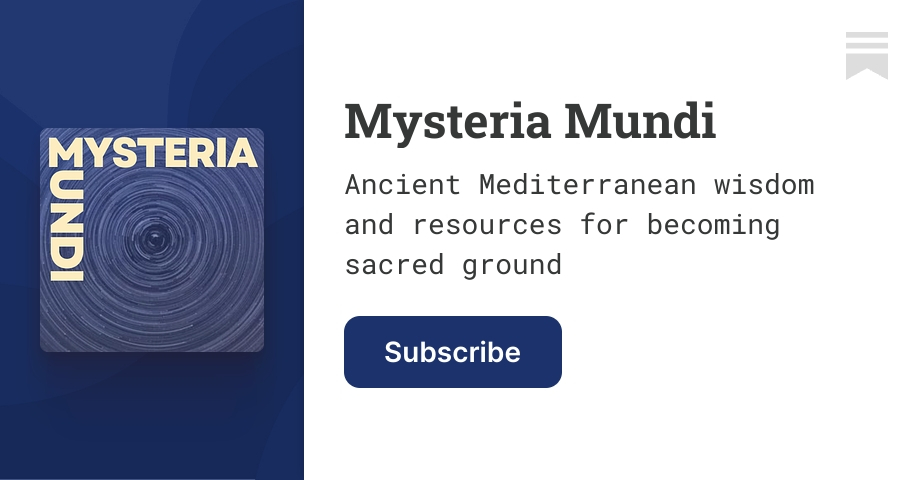
By the Light of the Silvery Moon
[Here begins the "essay"]
Synchronous Syncretic Sleuthing
Several weeks ago, I was in conversation with Amaya Rourke of Empress Craft.

(If you don't know her work, believe me, you want to!)
I’d come to chat with Amaya in order to follow up on a few threads I found when I read Christopher Cannon’s masters thesis Alaska Athabascan Stella Astronomies last year. You may have seen me loudly exclaiming my excitement about it.
YALL! I found a thesis on the topic of Alaska Athabaskan stellar astronomy!!!
— Bear Ryver, mixed mystic (@bearryver) December 16, 2021
I've been waiting to get my hands on some info about stars from the perspective of non-agrarian and non-settlement dwelling peoples.
Little did I expect to find something that includes MY PEOPLE!!!
Reading Cannon's thesis, I learned that my people have just one ‘constellation’ encompassing the entirety of the sky; and, that some of the stars of the constellation we call Aquila (Altair in particular) were used together with stars from The Big Dipper to recon time. More specifically, to determine the point at which it was time to begin morning preparations so that one could be ready to make the most of the short winter light provided by the horizon hugging Sun.
I'll obliquely dance around a few things, in order to observe a taboo, but I can tell you that upon learning about the way my people have traditionally viewed the stars, and Altair in particular, I began a process of direct relationship building - observation, study, direct communion. Until a certain point at which I knew I was ready to go deeper, with the help of a guide.
Who better than Amaya? I told her about what I learned about my people, and what I knew of the things we'd learned from Altair.
She spoke to me of thunder, lightning, eagles, and wayfinding. These are all things of Jupiter's sphere.

Our conversation quickly sprawled across the entire expanse of topics under the archaeo-astronomy umbrella pertaining to the fertile and fecund fields of the “bright shiny sky guy” (Gorton, Word Safari).
We got to talking, unsurprisingly, about the deities of the wilderness. Amaya proffered a particular trio:
Artemis, Sylvanus, Dionysus.
Building upon personal and direct relationships nurtured over the last three years, I quickly thought of a few other intelligences or spirits whose hymns fill me with images and memories of being deep in the forest far from the clash and clang of cosmopolitanism:
Hekate, and Adonis.
What follows might as well be Fortnightly Lunacy – except, it's not about the upcoming lunation. Instead, its an essay birthed by the Sagittarius New Moon itself.
Read on to weave along a winding and wyrd road through the ancient whispers of ancestors in the dark corners of the woods. I promise you'll find no answers in the words to come. My aim rather is to present you with prescient questions, and invite you into consideration / consideration of these themes.
Among them: how does the wilderness act as the secret bridge between Cancer and Sagittarius; and, what's Jupiter got to do with the Moon?
Can We Reverse Engineer Lost Wisdom?
Speculative reconstructions with the algorithms of astrology.
In our conversation, Amaya contrasted cultural worldviews that center stewardship vs dominion.
Dear reader, this is one of my favorite dialectics.
I could go on about the ways that my upbringing in a native family deeply wounded by forced conversion to Christianity and traumatic language loss influences my thinking on astrology beyond the bounds of agrarian culture. But that story is being told elsewhere.
What I want to share with you today is this thought I've been fleshing out about Jupiter – the way that Jupiter's domiciles (Sagittarius and Pisces) reflect the way that we humans think about Nature, our relationship to Earth, and our role in the cosmos. Thus, revealing the paradigmatic differences between a stewardship-based relationship of care model and a dominion-over orientation to the Earth and non-human beings.
Or put another way that I can't get sidetracked trying to explain: there's something here about the difference between the Moon's domicile and Jupiter's exaltation in Cancer and that sign's position on the ascendant of the Thema Mundi. Literally, that's probably two different articles, neither of which is the book so, let's keep it moving.
This thought begins at least as far back as 2013 with my level two Reiki attunement on Mt. Shasta. Maybe even to 20-year old Bear writing ecological anti-capitalist manifestos. Or... I won't take you back that far.
I am going to take you back to the summer of 2020 though and something I said while presenting a lecture I co-created at Allied Media Conference.
I've spent having this conversation with sky daddy Zeus about stewardship of the "wilderness" vs. civilization and systems of dominion of nature – without really having those words or names to give to that ongoing process.
The "Wilderness"
The wilderness is an interesting place. It’s a both a fantasy and a fabrication. One that comes from what I think of as the 'settled mind'.
My ancestors (my mother’s mother’s mother…) were nomads. Traversing the tundra and taiga of interior Alaska throughout the year, we didn’t have permanent villages until contact (in the early 1900’s). Or, so my Uncle tells me.
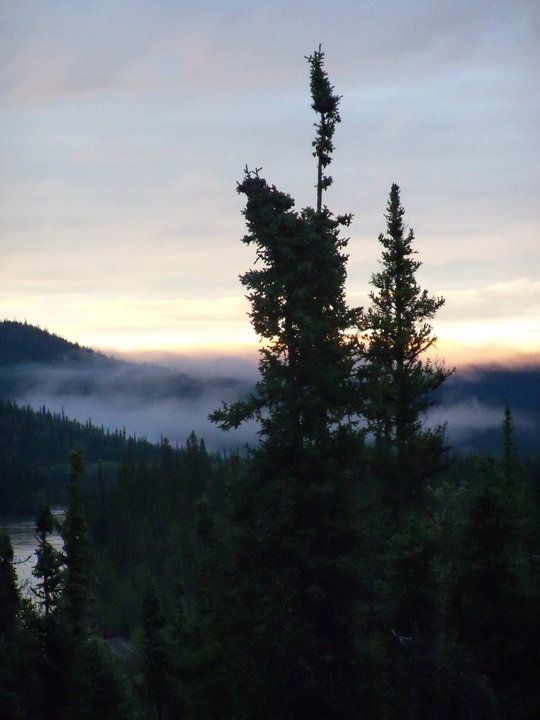
…we didn’t have the same notion of "wilderness" that my many other ancestors and their descendants did and do.
Mountains and rivers you weren’t meant to pass? Certainly. But the idea that a portion of the Earth is uniquely hostile to people, or devoid of humanity? No. Not as far as I’ve been told or can tell.
At least, that's what I took away from the summer I spent in our village as a kid. Out “in the bush”, as they say, you’re definitely in a place that most folks would call "the wilderness". Except, my family didn't call it that. They called it 'the village' and it was contrasted with everywhere that was not in the village - just endless forests interspersed with the cabins of my infinite cousins (or else 'the other families').
It’s just a place where we’ve always been and lived.
So it seems to me that what defines "the bush" and "the wilderness" is merely the absence of civilization. But in defining it as such I think we inadvertently center (by normalizing) the civilization project itself. In the same way that any qualifier-noun construction highlights the "otherness" of the subject in question.
Why does this matter? What does any of this have to do with astrology, deities of the wilderness, or this week's Sagittarius New Moon?
Let me try to sum up a thought 20 years in the making in less than 5,000 words.
Alternative Analogies
In the last session of the Intersectionality class that I taught for the Portland School of Astrology, I was asked a question about essential dignity. The question was (paraphrasing here) if the traditional dignity is inherently legalistic and property-oriented, and if so whether or not I had a frame of reference or alternative set of analogies that de-centers that particular philosophy of political economy.
At the time, all I could do was be honest that:
- The traditional source material uses legalistic metaphors pertaining to property because that's the ground from which astrology** emerged.
- I didn't, at that time, have a great anti-capitalist analogy that was complete and could convey the nuances of each type of dignity as they relate to one another
- I've been working on it
Admittedly, my most reached-for metaphor for dignity has to do with the notion of who has the keys to a house. Whoever owns the home usually has a key. There's often someone they trust a whole damn lot with a spare key – or who knows where the lockbox/flowerpot, etc. is – that's exaltation. Triplicity is like the folks who... you get the idea.
But even keys and which door folks can come in are still metaphors about property rights and hierarchical relationships. Neither of which are my jam.
So, how do we talk about essential dignity without talking about hierarchy, and systems of dominion?
The reason, I think, that we reach for the house / familiarity / safety set of metaphors is because there is a conflation, or a... culturally inherited a priori assumption that what is far from home is everything that lacks proximity to a specific place and that all such places are inherently dangerous.
Imo, this is just a carry over of the civilization vs. wilderness dichotomy. It seems very much like the domesticate vs. untamed animal one (which has some real unsavory manifestation when we start talking about labor and economies just about everywhere throughout just about all of history).
In each of those binaries what is civil, domestic, settled, and predictable is good, moral, and prescribed. Everything else is rendered illegible or illicit.
This isn't really an original thought - just what I've taken away from reading James C. Scott's The Art of Not Being Governed with respect to some of the most ancient tensions between the old old old ways (of living like animals called human) and the new way of being human brought on by the revolution of agriculture.
A Non-Agrarian Astrology –
is or was there ever any such thing?
I've been driven by a desire to find my way to the "non-culturally specific" rationale underlying the algorithms of astrology.
Because, our celestial relations are beings unto themselves - like the trees, rivers, mountains, and our mineral relations. So, there's a language they speak - and we can learn it if we care to listen.
And I wonder, or suspect even, that if we can figure out that language in a way that is beyond the bound of any particular culture (agrarianism broadly, included) then maybe I can reverse engineer some of what my ancestors were not able to impart directly through unbroken oral transmission.
one of the things that i’ve been sitting with is that my people are not agrarian or settled peoples. there are so many values and assumptions about “how people are” or even what is or should be understood to be shown in that chart that are… “civilization”-centric.
— Bear Ryver, mixed mystic (@bearryver) December 27, 2021
While there are many real problems with an unchecked syncretic approach, it's also a bit... problematically ahistorical to assert that syncretism is a specifically colonial technology. ...I think.
Taking a broad view of history and culture, it seems more fair to suggest that people have been swapping stories like spit from the very beginning of telling and keeping stories.
I prefer to think about stewardship and I think we can consider it as an alternative model for essential dignity.
(Yes, that’s why that word is somewhat awkwardly taking up the rear of my back to BASICS acrostic.)
Stewardship is meaningfully different than dominion. There’s no authority in stewardship. No hierarchy. In that sense, it’s closer to love – deliberately prioritizing the wellness of another being in action. Care enacted.
Stewardship has to do with taking care of a house - or the notion of providing for the care of others.
To be the head of the house (domicile) is to have the responsibility of stewarding a lineage – or, tending the long-term existence of a group. Like being responsible for the family unit as a whole, or 'carrying the family name,' stewardship does not confer power-over, but rather responsibility-to or -for.
That may be the role of the several elders, or a particular matri/parti-arch in your family or chosen or blood origin. Thinking beyond the scope of our human lives we can think about that role as the 'grandfather oak' in a grove, or the animal that leads an herd of herbivores / pack of predators.
With exaltation, I think of it more like stewarding a specific home. An exalted oak might the pictureque archetype of an Oak tree that may very well not be the grandelder of the grove. They may head a house, but it's not the house as in the family name, but maybe just the dwelling where family dinners are hosted.
As a person raised by my indigenous family (admittedly disconnected, though that's a different story...) I was taught to consider the long-term (yes, as in seven generations) impact of my actions.
"What if everyone did the same as you? Everyday? Then what would it be like in seven generations, for your grandchildren's grandchildren's grandchildren?"
- Grama Elly
There are two ways I’ve been thinking about this. One is with Venus as the steward of what is “best” about Pisces. That might be kind of like the difference between a good friend (domicile ruler) and a friend who brings out the best in you (exaltation lord).
The other way, which I like less, is this: the things that belong in/to Pisces are freely available to Venus. Beauty, art, poetry, philosophy…
What do those have in common? An ability to connect and relate that which is seemingly disparate. To see the two heads of the fish, seeming to face opposite directions, yet connecting them by their path. Or, you know, the way a great metaphor works.
This is an action of Venus - harmony, concord, merging. And it's also an action of Jupiter – to bring things into one-ness by making them part of a continuous expanse. A different kind of merging. We could get into the distinctions between Pisces and Sagittarius based on temperament or other
The way that we’re digesting our subjective experience can help us to make sense of what we value, the philosophy those values stem from, and then (most importantly!) allow us to connect them to courageous action.
That last part is a whole ass other conversation, probably best saved for a podcast, and one I hope to be able to have with Taylor Shuler sometime soon. If you don't know her work, you definitely want to. You can check out her podcast On Thriving, and if you register for 2023's NORWAC (Northwest Astrological Conference) you can hear her speak about the application of design and systems theory, ecology, and astrology.
But I digress.
What I want to share with you today is a couple of thoughts on Jupiter, Pisces, the wilderness, and what I've been calling a "non-culturally specific" frame of reference for astrology.
What I mean by that is the way that the Sun is not culturally specific - the infinitely generative and generous source of all life and warmth and abundance is very much there. Their/His/Her own self-illumined existence is self-evident. Our the 40-day period of Venus's invisibility - again, self-existent and evidently so.
There's this thread that I've been pursuing as long as I've been "seriously studying astrology." I think it's fair to say that means reading books that are meant for after beginner studies have been exhausted and/or work that is meant for those engaged in the profession or academic study of astrology. For me, that time period started back in 2003 with some of Stephen Arroyo's books.
As a disconnected native (my mom is enrolled, I'm not yet) I yearned then, and still do now, for ways to reconnect with the wisdom of my ancestors. Things like language loss (legacy of christian boarding schools), and just a few generations of being raised away from ancestral lands means there are sharp limits to the extent that that's possible. Time spent in the village as a kid, living in Fairbanks in my early 20's, and under the stars has taught me that the Earth, the rivers, the mountains, the stars... those are the same for all of us.
It would only follow then that the Discipline of the Stars would lead one to a deeper understanding of what I somewhat hesitantly call "natural law" or "the original instructions." (discipline = training of a disciple; disciple = one who understands and analyzes something thoroughly)
Back then, at the age of 15, approaching astrology from a place of elements and directions made a certain kind of sense to the many different lineages that speak through my bones. All people have interacted with fire, water, air, and earth. I'll save a further details and backstory for the book, but there's a connecting thread between
Jupiter's beneficence, Jupiter's exaltation in Cancer, the Wilderness and its deities, and the hidden connection between Cancer and Sagittarius.
I attempted to explain a bit of a thought that I first stream-of-consciousness'd into existence when co-presenting a talk at Allied Media Conference back in July of 2020 the other morning in a live on Instagram.
I can't include the image from the original talk, nor a current one as the previous commons license was revoked. It's well worth checking out the original article and looking into the book if you're inspired by Iyer's work though. Read the original piece on medium here.
An excerpt from the transcript of the original talk (me talking about the famous medium article turned book by Deeper Iyer and the visual model for role within movements for change), with some minor edits for clarity:
"But I think we could also say that maybe it's Jupiter. That – that the way that storytelling leads to stewardship, and Jupiter is really about, you know, expanding our horizons to encompass as much as possible. I don't want to get too technical, because technicality is colonialism. And also because it might just be inaccessible. But, you know, there's like, one thing in astrology is called exaltation, right? It means on high, right? The same way that we'd use [the word] exalted today. And Jupiter is a planet that's exalted in Cancer. So, we're looking at like caregiving, right, that's one of the roles one of the very important roles. If you don't have childcare, you probably shouldn't like, especially if your children are young, it's not a great idea to go get arrested at a protest, and then leave your babies abandoned. So, the ability to Jupiterian-ly, take on the role of stewardship, expand our definition of who we're responsible to, right, it takes a village to raise a baby that's Jupiter being exalted in cancer. That's the importance of child care, right?"
- Bear Ryver
(Planets as Movement Ancestors; Allied Media Conference 2020)
Okay, but what's Jupiter, the wilderness, and Pisces got to do with the Moon, Sagittarius, or this New Moon in Sagittarius which occurred yesterday November 23rd at 14:39 PST?
Well, the Moon is peregrine in Sagittarius, but can hear Her/Their/His home of Cancer. The Moon also has a decan of Sagittarius - the 3rd.
The Moon became new at 1°37' Sagittarius, inside the domicile and term of Jupiter. The Moon had just separated from a trine to Jupiter from late Scorpio, and after the conjunction with the Sun applies to a conjunction with Mercury. Be the time they meet the two will be in Sagittarius II, the decan of the Moon. By degree, the Moon will still have another day before it forms another exact aspect with Jupiter (though the whole sign square is certainly there).
What does this mean in English?
We can imagine the Moon as having recently caught up with Jupiter; or, we can think of our ability to digest what we're aware of having observed so that we can assimilate that awareness into experience (Moon) as having caught up with the daydreams / visions / fantasies / hopes we have for the future.
Earlier this week I recorded an episode of the Weekly Weather with Amanda Pua Walsh of Astrology Hub. We talked about the feeling of discontent and discouraging disillusionment that's been persistent this year. I suggested that unpleasant as it is, we can also take that discontent as an indication of what matters to us – in the same way that anger is often an indication of our feeling that a boundary has been violated.
If Sagittarius is philosophy, and the principles or convictions around which we organize our will in orientation toward the future, and the Moon is the ability to digest and assimilate as I mentioned above, then the Sagittarius New Moon is a lunation that can be about finding nourishment in our most optimistic and principled visions for the future.
Taking the Tarot's Path
and closing the loops of this post
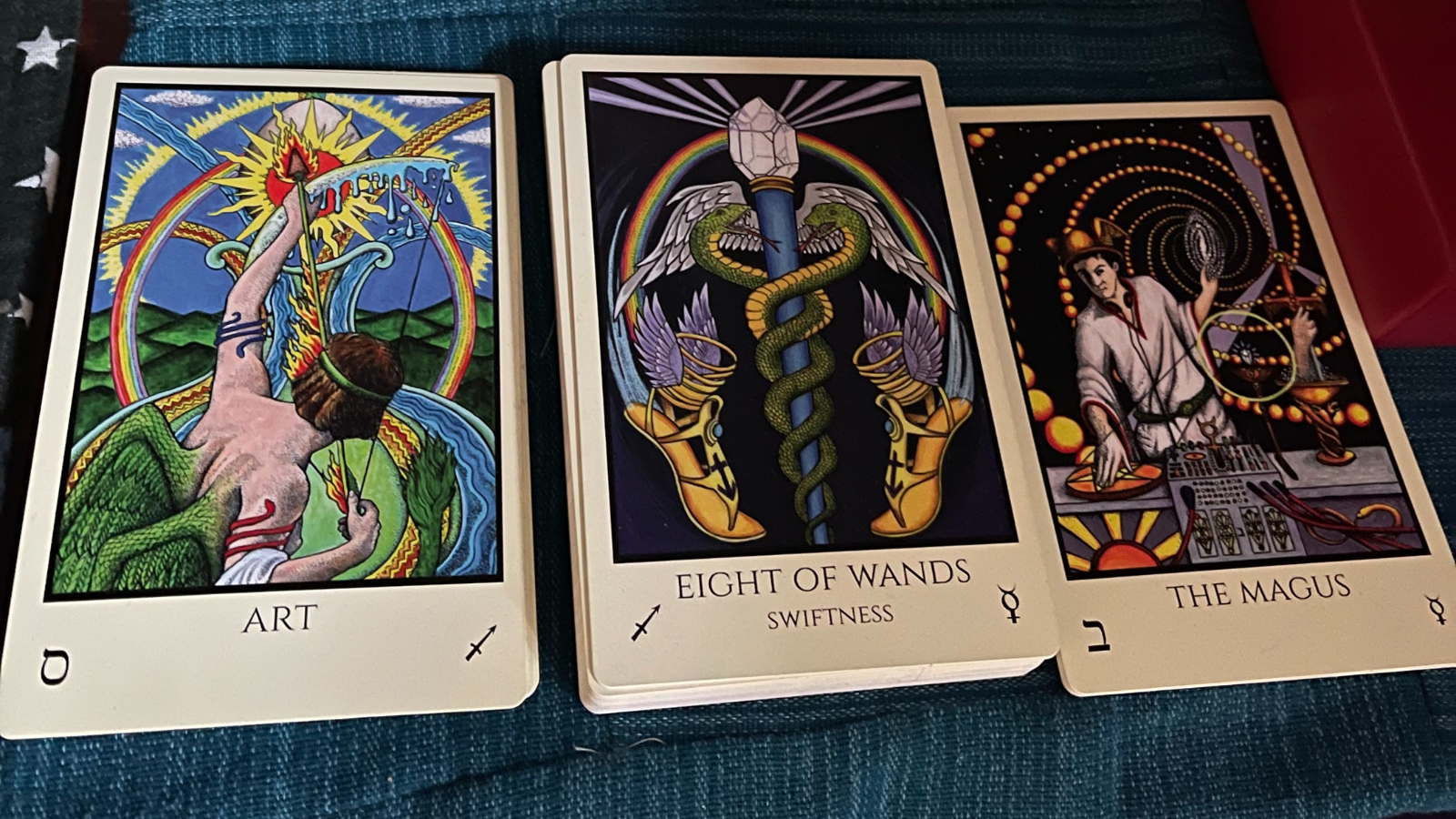
I won't get sidetracked with tarot and decan walking, but I will close up one of the loops pertaining to Artemis, the Moon, and Sagittarius.
This thought twists and winds tangentially across the Tarot, the Runes, mythology, astrology, and my own personal conjecture / reflections / unverified personal gnosis. So, take whatever you will with a hefty sprinkling of the finest salt.
It goes something like this:
- Temperance (or the Art card) is numbered 14.
- 1 + 4 = 5.
- 5 is the Hierophant - the sacred ox herder.
- Ox (like the rune Uruz) is the "wild" source of sustenance.
(In the divinatory tradition related to the runes, we can contrast Uruz with Fehu - aurochs with cattle).
Now, I'm playing with mixed metaphors and conflating cognates here, for sure, but the underlying idea I'm trying to point to tracks, I think.
So, pardon my sloppy storytelling, but do sit with the subtle set of symbols I'm scattering about like so much paint...
Wilderness and Civilization
That's Uruz the aurochs for wilderness and Fehu as cattle for civilization (to you).
Now, Artemis is associated with deer, and deer are neither cows nor aurochs. But they can be mighty horned beasts on either side of the city/wilderness divide. We can slide on over into other strains of old world mythology and consider the Sacred Hart and its connection with the wild unspoiled forests as the aurochs counterpart to... I guess we can call them mundane deer.
I'm looking at this as a memory of our transition from hunting and gathering peoples to settled agrarian ones. The switch in emphasis from the hunt of the wild aurochs / stag, to... ...awaiting the breeding season for smaller game like deer as a supplement to the food stores packed away for winter - credit to Amaya for adding this consideration to the conversation.
So, the Moon is associated with Artemis. Or rather, Artemis is a goddess who has been correlated to the Moon in a couple of different ways. If we think about her as the twin to Apollo (a solar deity) we can think of Artemis as having the other light – the Moon.
So Apollo is associated with music, healing, archery, and... cattle.
Artemis is associated with... archery, and called the "wood haunting protector of dogs," a frenzy loving hunter of deer.
Now, Amaya offered Artemis, Sylvanus, and Dionysus as a trio of wilderness deities. And I must admit, Sylvanus and Dionysus are two spirits I haven't connected to or built relationships with. Though as one who is committed to a path informed by the... post-modern occultist's reclamation / reconstruction of Orphic rites and mysteries... I appreciate the Dionysian mysteries were equally significant in the geo-temporal context in which my astrological 'ancestors' existed, and that Dionysus was a central figure within Orphism as well.
There are however, two other beings that I have been slowly getting to know over the course of the last several years. Prayers and evocations in their honor aren't mainstays of my practice, and I wouldn't even call myself a devotee of either of Them, though I do understand them as integral participants in the cosmology I understand myself to be embedded within.
All three of these beings I associate most with the Moon, though one will take a bit of explaining.
Hekate, the ‘triple goddess of the places where the three roads meet’ is associated with wild places and dogs.
Adonis is said to "rejoice in packs of dogs" and solitude. Personally, I imagine them (Adonis is said to be both girl and boy) to be enjoying that solitude out there in nature. Away from people in the place we call the wilderness. Like Artemis who's is associated with wild places and dogs.
I think these are all references to riparian zones - ecological, cosmological, and temporal. The thin ephemeral veil between our separate-from-nature and "base animal" natures.
The ecological riparian zone is the borderland between the "wilderness" of lands uninhabited and uncultivated by humans, and "civilization" or what James C. Scott calls the valley state. Between these two places there are niches exploited by many crafty creatures. It's likely that our relationship with at least one (semi) domesticate emerged from their willingness to venture in to this very place.
I'm talking of course about cats - the real dominant species on planet earth.

So, this is totally my own pulling together various strange strings: wilderness deities being associated with a "wild" counterpart to their (often twin) deity's domesticated one. There's Freyr's association with cattle (and also grain, so farming generally), and the farming gods vs. wilderness gods motif. Like, take it back to Enkidu and Gilgamesh even. This is some primordial shit in the human consciousness.
I think it's interesting that the tarot card associated with the sign of Pisces is the Moon - which depicts a wild dog (or wolf) opposing a domesticated dog. Yeah, you read that right -- it's not the Moon in the Tarot, but the High Priestess who's associated with the astrological planet of the Moon. The High Priestess is, of course, the counterpart to the Hierophant.
There's this wild vs. domesticated animal metaphor or parallel for the animal vs. "civilized" aspects of humans.
Now, I often think about the signs that "mediate" between signs that hold down different aspects of a planet's dignity.
The Moon's domicile is Cancer, and in the sign of Virgo the Moon rejoices relative to her home, and can see his exaltation in Taurus by trine whilst enjoying nocturnal triplicity. So Virgo is actually a better spot for than Moon than one might first think. It's interesting to think then that Capricorn has some similar qualities, whilst still remaining the depression or detriment of the Moon (the Moon here opposes Cancer, whilst trine to Taurus). In Pisces, the Moon sees Cancer by an overcoming trine, and they cooperate with the triplicity while sextile to Taurus.
So the Moon --> wild dog --> Pisces connection makes some sense, now doesn't it?
But what about Sagittarius? That's where antiscia comes in.
Signs like Cancer and Sagittarius are in aversion to one another. Signs in aversion cannot see each other. But signs like Cancer and Sagittarius are connected through antiscia.
In the Thema Mundi, Sagittarius holds the 6th house. The 6th house is one that my friend and colleague Alyssia Osorio links to care. I see links there too to service, hospitality, and healing. (By now you know - 'nother article, 'nother day.)
So, to (attempt at least) to wrap up this behemoth meandering piece:
The Moon in Jupiter's houses (Sagittarius and Pisces) is "un-tamed" – oriented toward a relationship of caring stewardship over what the "wilds." In Pisces, the quality of the Moon is readily apparent - a certain somaticizing of the liminal and transcendent into images and forms we can digest and assimilate.
That is, the Moon's cooperation in the watery triplicity together with the overcoming trine to Cancer makes Moon-Pisces transits and energy more readily apparent.
The Moon, in Mundane astrology, represents the people or the masses. And, in the architecture of the spheres, everything we experience occurs in the sub-lunar realm.
So... perhaps Dionysus, Sylvanus, and Artemis represent the watery manifestation of Jupiter's associate with the wilderness (i.e. "loud-sounding slopes of mountains").
Whereas Hekate and Adonis might make us think of the more ferocious forms of the wilderness. The secret third option (the place where the three ways meet). The both/and (Adonis is both girl and boy).
And that's that on that – for now.
References
This isn't properly cited or footnoted, but I've either quoted or picked up key bits of information that have informed this piece from the following sources:
Dunn, Patrick The Orphic Hymns: A New Translation for the Occult Practitioner Llewellyn Publishing, 2021
Chang, T. Susan 36 Secrets: A Decanic Journey through the Minor Arcana of the Tarot Anima Mundi Press, 2021
Fortune's Wheelhouse Podcast created by T. Susan Chang and Mel Meleen
Have a question for Bear? Want to connect with other astrologers and astrology enthusiasts?
As always, I hope these words find and serve you well.
If you'd like to start a discussion or pose a question to your fellow members (and/or Bear) feel free to post down below!
If you'd like to reach out to Bear directly you can reach him at: contact@bearryver.com



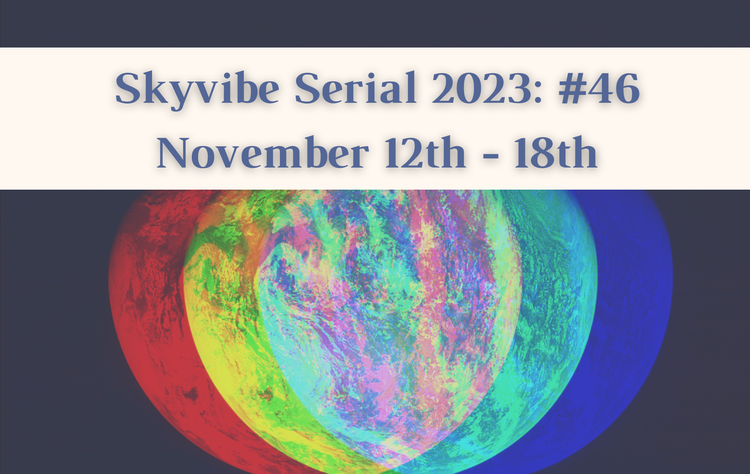

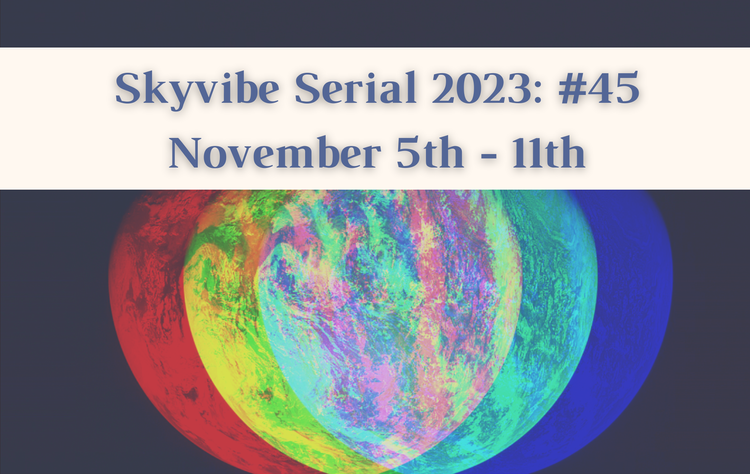
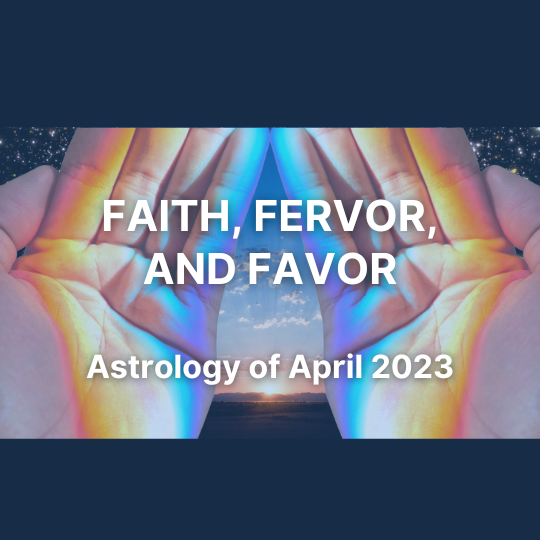
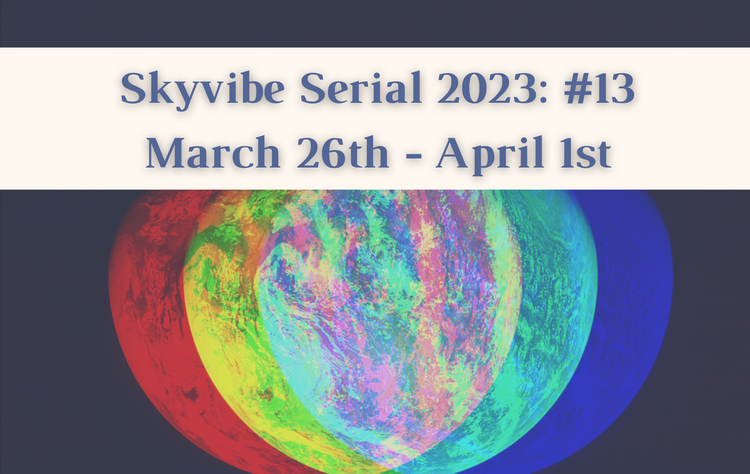
Member discussion